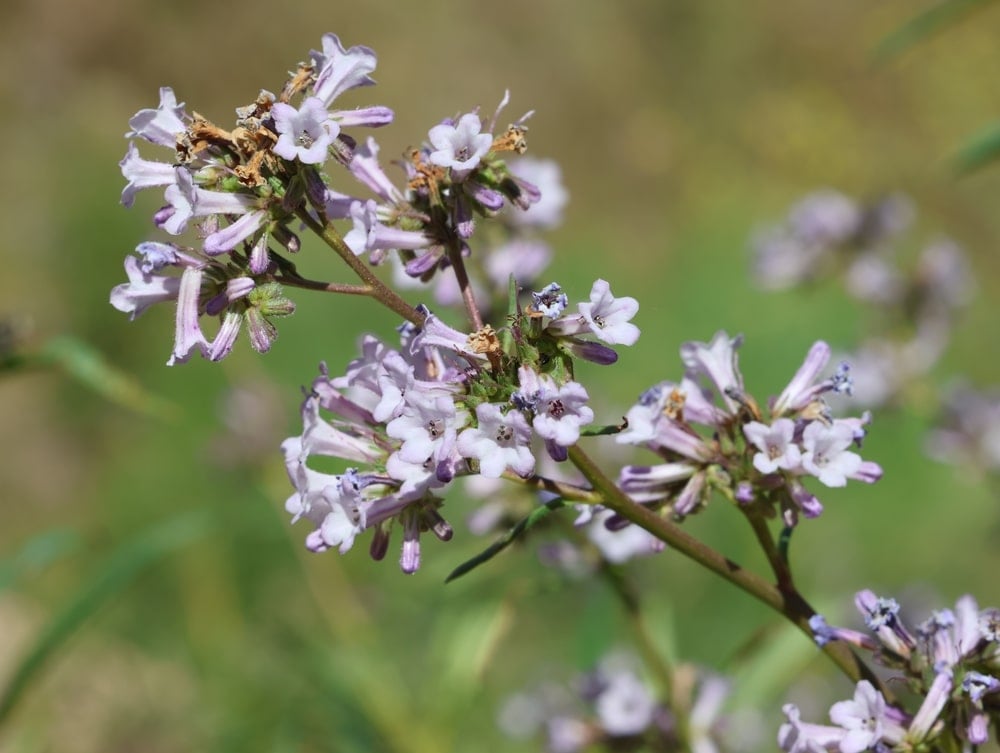
Yerba Santa homeopathic medicine is derived from the leaves of the Yerba Santa plant, scientifically known as Eriodictyon californicum. Also called bear’s weed, holy weed, mountain balm, and consumptive’s weed, this herb has a rich history of use in traditional herbal healing, particularly by Native American communities. The name “Yerba Santa,” meaning “holy weed,” reflects its revered status as a natural remedy.
What is Yerba Santa?
Yerba Santa is an evergreen aromatic shrub native to the hills and mountains of California, Oregon, and northern Mexico. The plant, also referred to as gum plant or Eriodictyon glutinosum, grows up to 2.5 meters tall and features sticky, lance-shaped leaves with white to lavender flowers. These leaves are the source of the potent compounds used in herbal and homeopathic medicine.
Yerba Santa Mother Tincture and Homeopathic Medicine
The yerba santa mother tincture is a concentrated liquid extract prepared from the fresh or dried leaves of Eriodictyon californicum. As a homeopathic medicine, it is used to harness the natural properties of the herb in a safe and effective way. Mother tincture manufacturers follow relevant directions and standards, such as those outlined in the British Pharmaceutical Codex and by the Pharmaceutical Society of Great Britain, to ensure quality and consistency.
Effects of Yerba Santa
Yerba Santa exhibits several effects beneficial for respiratory conditions, including coughs, dry cough, bronchitis, asthma, and chest congestion. It acts as an expectorant, helping to loosen and expel mucus and phlegm from the respiratory tract. This makes it valuable in treating respiratory infections and related symptoms.
In addition to respiratory support, yerba santa homeopathic medicine is believed to stimulate energy metabolism and aid weight management. Studies involving antioxidative Santa herba extract suggest neuroprotective properties, with sterubin identified as a potent neuroprotective compound that may have implications for age-associated phenotypic screening and treatment of neurodegenerative diseases.
Potential Health Benefits and Uses
- Respiratory Conditions: Used traditionally to relieve coughs, colds, asthma, and chronic bronchitis.
- Weight Management: Clinical studies with eriodictyon californicum extract indicate potential benefits in reducing body fat and supporting metabolism.
- Skin and Wound Care: Yerba Santa has been applied topically to treat bruises and rheumatic pain.
- Hair Care: Extracts from eriodictyon angustifolium have shown promise in reducing human hair greying.
- Cancer Research: Compounds from yerba santa are being studied as potential cancer chemopreventive agents.
Safety, Dosage, and Precautions
While yerba santa is generally considered safe when used in amounts commonly found in food or homeopathic preparations, there is not enough reliable information regarding the appropriate dose for all uses. Natural products are not necessarily safe in all dosages; therefore, it is important to follow relevant directions on product labels and consult healthcare professionals before use.
Pregnant and breastfeeding women should exercise caution and avoid use due to insufficient safety data. Children should also use yerba santa products only under professional guidance.
How to Use Yerba Santa Homeopathic Medicine
Yerba Santa mother tincture is typically administered in small doses, often 6-12 drops diluted in water or juice, taken under the tongue or as directed by a healthcare provider. It should be stored in a cool, dark place and kept out of reach of children.
Conclusion
Yerba Santa homeopathic medicine offers a natural approach to managing respiratory infections, chest congestion, and other conditions. With its rich history and emerging scientific interest, particularly in neuroprotection and weight management, it remains a valuable herb in herbal healing traditions. However, due to limited clinical data, users should consult professionals and follow product labels carefully to ensure safe and effective use.
References
- Duke JA, Bogenschutz-Godwin MJ, duCellier J, Duke PK. Handbook of Medicinal Herbs. 2nd ed. CRC Press; 2002.
- Fischer W, Currais A, Liang Z, Pinto A, Maher P. Old age-associated phenotypic screening for Alzheimer’s disease drug candidates identifies sterubin as a potent neuroprotective compound from Yerba Santa. Redox Biol. 2019.
- Mödinger Y, Schön C, Wilhelm M, Pickel C, Grothe T. A food supplement with antioxidative Santa herba extract modulates energy metabolism and contributes to weight management. J Med Food. 2021.
- Khan IA, Abourashed EA. Leung’s Encyclopedia of Common Natural Ingredients Used in Food, Drugs, and Cosmetics. 3rd ed. Wiley; 2010.
- Lewis WH, Elvin-Lewis MPF. Medical Botany. J. Wiley and Sons; 1977.
Masterful Display
Each and everyone of our products are deeply considered, labored over, and improved upon time and time again. We invite you to experience the difference of our carefully crafted small batches of herbal support items. Whether it be our tea line, produced for a delightful experience, or our tincture blends and extracts, we have what you need.

